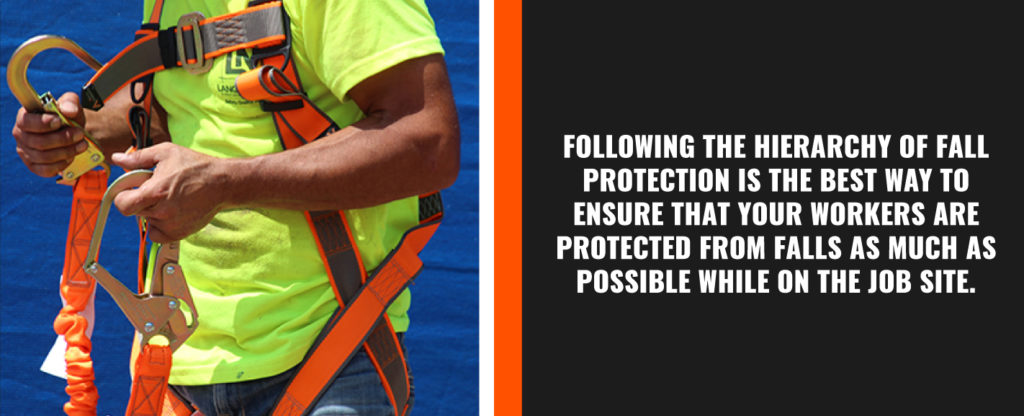If the task is necessary, you cannot remove the hazard, you cannot guard yourself in passive or active fall restraint, then you will move to fall arrest. Fall arrest utilizes all components of a personal fall arrest system including anchorage, bodywear, connector, and deceleration device. Every component in this system works together to arrest a fall. Each of these components will have been tested, verified, and inspected to work together to arrest the fall. Fall clearance distance should be calculated, and the correct anchorage and deceleration device should be utilized for each hazard.
The last resort for safely working at heights is controlled access to the zones or administrative control. An example of a controlled access zone would be a flat roof with colorful flags to regulate height that serves as a barrier and a visual sign for the worker to not pass. There are standards that you must abide by when setting this warning line. Another is one dedicated employee as a safety monitor to ensure that the control access zone is respected by all employees on the job site. This type of fall protection is only authorized when all other methods of fall protection are unable to be reasonably performed.
The main benefit of working in fall restraint over fall arrest is that the worker doesn’t fall. When working with the hierarchy of fall protection it’s important to eliminate as many steps as possible. If eliminating the hazard is not an option, then working in fall restraint is the next safest practice.
The Hierarchy of Fall Protection

In a work area, there are times when you can eliminate fall hazards, and others when you will need to put protective measures in place because the site cannot reduce or remove the chances of a fall. A hierarchy of fall protection is an order of control to eliminate and reduce the risk of a fall hazard.
A job site should implement the first step of the fall protection hierarchy whenever possible. Consider steps two through five if the previous systems are not feasible.
1. Fall Hazard Elimination
The best solution for protecting workers against fall hazards is through elimination. You can accomplish this in several ways, such as modifying the work to occur at ground height or putting a scaffold in place that protects a roof edge.
Before purchasing equipment or systems, managers of all job sites should also apply the elimination hierarchy to any hazard. While these solutions may not be the most cost-effective, removing all fall hazards means there is no risk of falling, which creates a safer environment for everyone.
2. Passive Fall Restraint
The second most effective solution to protect workers against falls is a collective remedy such as implementing guardrails or barriers. Collective solutions do not require users to perform actions such as wearing a full-body harness or securing a lanyard to an anchor point, which leaves less room for human error. Some additional examples of these passive systems include:
- Stairways
- Barricades
- Platform systems
- Safety Nets
With a passive fall restraint system, workers can undergo minimal training before starting work. While a rescue plan is not a requirement for this type of system, having a program in place can provide additional protection for workers.
3. Active Fall Restraint
If a job site cannot implement the elimination or collective fall restraint system, it can use an active fall restraint system. Active fall restraint involves using personal fall arrest equipment such as a restraint lanyard and full-body harness to restrict a worker’s movement so they cannot travel to the hazard.
In an active fall restraint system, all workers must undergo Authorized and Competent Person training before starting work at a job site. An active fall restraint system also requires work sites to have a written rescue plan to help workers as quickly as possible if a fall occurs.
4. Fall Arrest
When steps one through three of the fall hierarchy systems are not accessible, a job site may consider a fall arrest solution. A fall arrest system uses the same protective equipment as an active fall restraint system, such as a safety net. However, the personal fall arrest system does not engage until after a fall occurs. It slows the worker’s fall to bring them to a safe stop.
A fall arrest system is often the least beneficial option because:
- A fall must occur for the system to activate, which leaves room for equipment failure and injury.
- An employee can still obtain a serious injury from hitting a structure or using improper equipment as their gear works to slow their fall.
- The site must have all employees undergo Authorized Person training and have a written rescue plan to help alleviate suspension trauma and mitigate further risk.
5. Controlled Access Zones
Controlled access zones are the most complex of all hierarchy levels and require professional engineers to install a system to protect workers against fall hazards in industries such as edge masonry and tilt-up construction. In this system, workers do not have restrictive equipment and use marked areas and training to create safe environments for individuals performing jobs at various heights.
Learn more about how to use hazard assessments to identify and reduce fall hazards.
Malta Dynamics: Mastering the Hierarchy of Fall Protection for Enhanced Construction Safety
Understanding and implementing the hierarchy of fall protection is crucial in the construction industry to prevent severe injury. Utilizing a fall protection system and selecting the right safety products from trusted brands like Malta Dynamics can significantly reduce risks. From eliminating hazards to controlled access zones, each step plays a vital role in ensuring worker safety. For more detailed information on fall protection systems and safety products, reach out to one of our experts.







